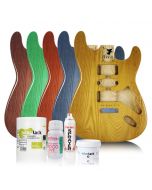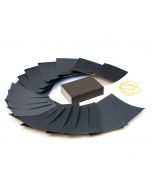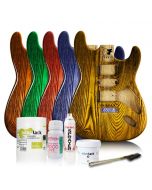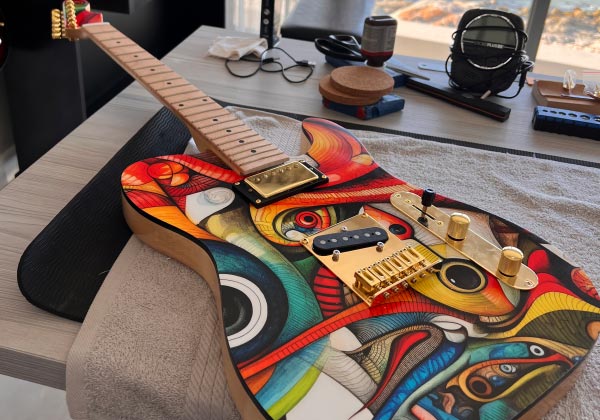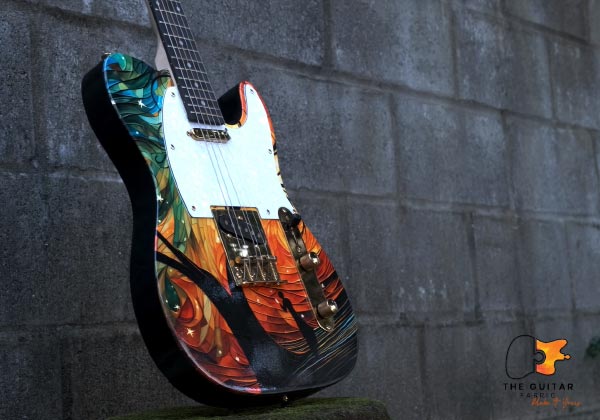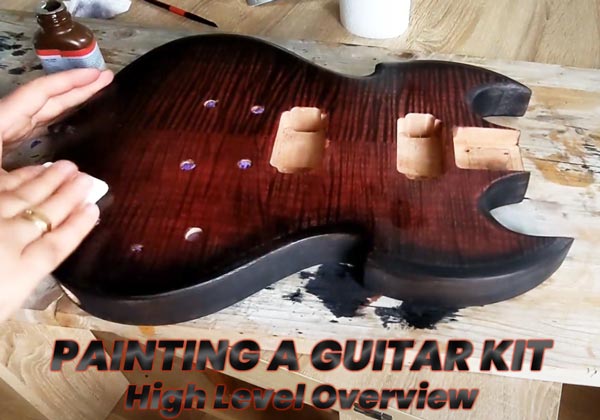
ACHIEVING A FLAWLESS GUITAR FINISH: STEP-BY-STEP GUIDE
Creating your own guitar is a gratifying journey that demands meticulous attention to detail. While the essence and performance of the instrument remain unaffected, a premium finish becomes a testament to the craftsmanship. This guide walks you through the process of achieving a high-quality finish for your guitar, ensuring a polished appearance that reflects your dedication to the art.
Comments: This articles provide a high level overview and include the main steps to paint a guitar. Each painting steps will be discussed in details in other articles.
Define your design
The very first step is to think and clarify how you want your guitar to look: are you looking for a natural finish with only a varnish? Translucid? Opaque or metallic? Some special effect? Once you know about it you need to assess which type of products will be the best to achieve your goal. Is it better to use nitrocellulose, polyurethane paint, waterbase, dye, tru oil… Read our specific articles to help you decide which way you want to go.
Essential Preliminaries: Setting the Stage
Before diving into the finishing process, some crucial preparatory steps must be taken:
- Check for Glue Stains: Carefully examine your body and neck wood for any glue stains. Ensure a clean slate before proceeding, as glue residue can mark the final outcome
- For dyeing a unique veneer: to remove glue stains on flamed, quilted, or spalted maple top, gently perform spot sanding by hand using 400/600 grit sandpaper until the stain is no longer visible. When applying stain to a body with such a veneer, use minimal amounts to prevent over-soaking and the formation of blisters
- Wood Sanding: Begin with sanding your guitar neck and body. Although your kit arrives sanded at P180 grit, further sanding to P240 and P400 is ideal for a smooth base. Employ sanders for flat surfaces and hand sanding for curves and intricate areas

Perfecting the Canvas: Grain Filling
For open-pore woods like mahogany or ash, applying grain filler is essential. This process fills pores for a uniform finish:
- Application: Use a plastic card, old credit card or a cloth to apply grain filler to open pores.
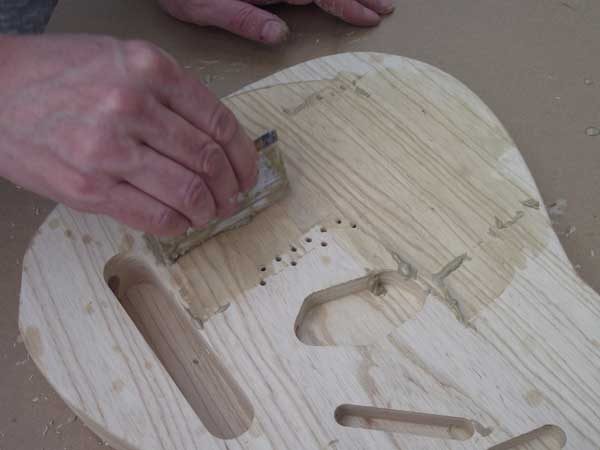
- Scrape and Sand: Scrape off excess filler meticulously to avoid hardened residue. Lightly sand with P600 for a refined surface.
Building the Foundation: Priming and Painting
Primer and paint contribute to a robust foundation for your finish:
- Primer: Apply primer, although it is not mandatory if you have already grain filled or your wood has its pore closed, it will save you paint and will lead to an even smoother finish.
- Color Lacquer: Aim for 2-4 coats for desired color intensity. With nitrocellulose, sanding between coats is unnecessary unless drips or runs are present.
- Neck Color Coat: Tailor your neck's finish according to your preference—whether it's a natural, vintage, or painted look—by choosing between a sealer, color lacquer, or varnish lacquer, with the latter being the essential final step.

Varnishing for Protection and Luster
The varnishing step not only enhances your guitar's appearance but also shields it over time:
- Body Varnish: Employ the same spraying technique used for color coats. Apply 4-6 varnish coats, allowing a week's drying time before polishing.
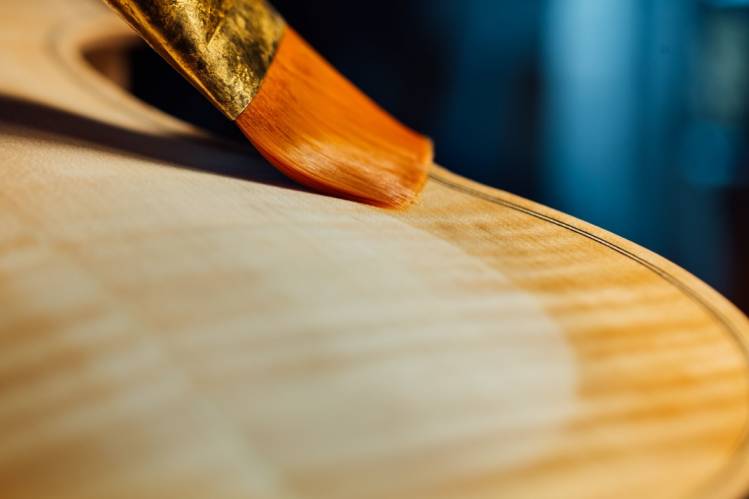
- Neck Varnish: Prepare for varnishing by careful masking of areas like the nut, binding, and fingerboard; consider avoiding varnish on the fingerboard due to potential stickiness, and remember safety measures when using spray paint. Anticipate a total of around 8 to 10 coats for a complete finish, though the use of a grain filler could reduce this to 5 to 7 coats.
Note that between coats of paint and varnish you might need to sand from P600 to P1200. Read specifics articles on the subject for more information.
Achieving the Final Shine: Polishing
Polishing is optional but contributes to a mirror-like gloss:

- Sanding: After a week of varnishing, lightly sand with non-loading 1200-grit sandpaper. Use a rubber eraser to maintain the contours while sanding with the grain.
- Fine Sanding: Follow up with 1200-grit sandpaper, using water and dishwashing detergent as a lubricant. This removes previous sanding marks
Elevating the Shine: Polishing Compound (Optional)
- Sanding Alternative: Instead of proceeding with fine sanding, you can opt for a polishing compound to achieve a brilliant finish.
- Application: Apply the polishing compound sparingly, using gentle pressure initially. Gradually reduce pressure as the gloss intensifies.
- Progressive Grits: Employ polishing compounds with varying grits, starting from around 1000 and progressing to 2000-2500.
Your Immaculate Creation
Following these meticulously laid-out steps, you can achieve a professional-grade finish for your guitar project. Your dedication to the process is bound to shine through in the instrument's polished appearance. Remember, our online store offers a range of finishing products, ensuring compatibility and providing the best quality-price balance. Happy building and creating your masterpiece!
 UK
UK FR
FR DE
DE IT
IT ES
ES
